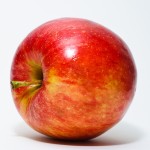
Friesian-Holsten
By Catherine Haug, August 21, 2015 (Photo, right, from Wikipedia)
The lifestyle blog, Take Part, featured an article today titled Your Organic Spinach Could Be More Dangerous Than Meat, by Willy Blackmore (1). At issue is contamination of vegetable crops, both Organic and conventional, primarily by contaminated animal waste (primarily from CAFOs – Confinement Animal Feeding Operations) leaching into ground water.
A classic example was a 39-state recall of E. coli-contaminated spinach a few years back, that was caused by animal waste from a nearby CAFO leaching into groundwater regularly used to water the crops. Similar recalls have involved listeria and other pathogens.
Data from the CDC (Center for Disease Control and Prevention) indicate food-borne illness is far more likely from produce, than for poultry, seafood, red meat, eggs or dairy (2).
What is the solution to this problem? (more…)




